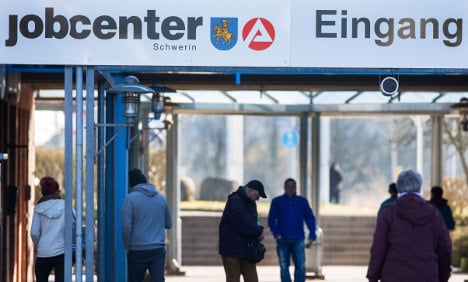The number of people registered as unemployed in Germany fell by a seasonally-adjusted 15,000 to 2.798 million in February, the Federal Labour Office said.
The unemployment rate — which measures the jobless total against the working population as a whole — slipped to 6.4 percent in March from 6.5 percent in February, also the lowest level since west and east Germany reunited in 1990 after the fall of the Berlin Wall the previous year.
In raw or unadjusted terms, the jobless total decreased by 85,500 to 2.932 million and the jobless rate eased to 6.8 percent in March from 6.9 percent in February, the labour office said.
Normally, unemployment declines in the spring as the warmer weather allows companies in sectors such as construction to take on workers.
But the current strength of the economic recovery in Germany was magnifying that effect, the labour office said.
"The labour market developed positively both on the supply and demand side," it said.
"The employment trend remains pointing firmly upwards. And usual spring upturn that begins in March was stronger than usual," it added.
German gross domestic product (GDP) expanded by 0.7 percent in the fourth quarter of last year, fuelled primarily by consumer spending and exports, but also by construction investment.
"Early indicators point to an overall favourable development in 2015," the labour office said.
Meanwhile, other European economies such as Italy continue to struggle.
The Mediterranean country is suffering from an overall employment rate of 12.7 percent, and 42.6 percent among people aged under 25.



 Please whitelist us to continue reading.
Please whitelist us to continue reading.
Member comments